
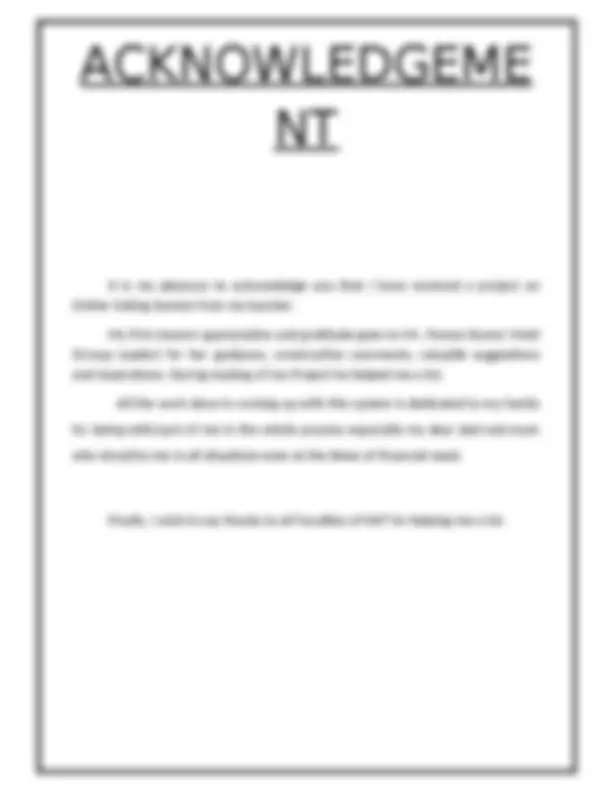
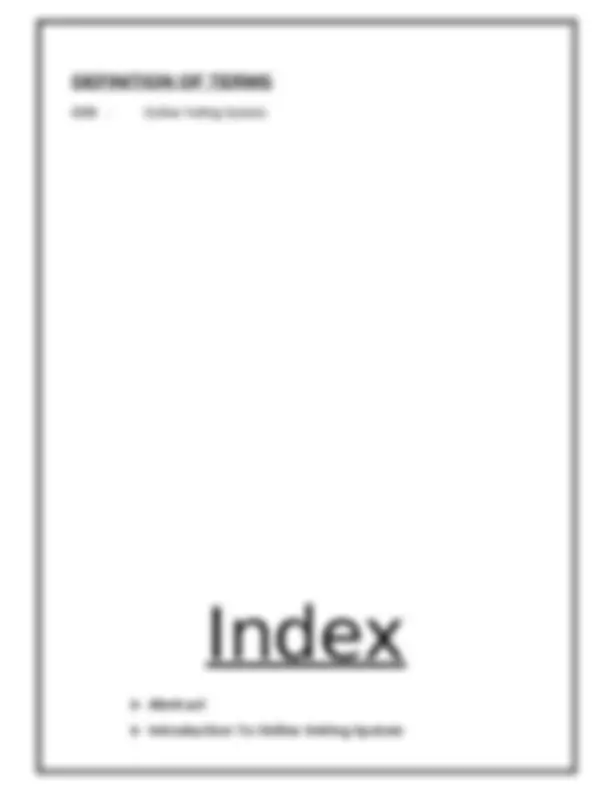
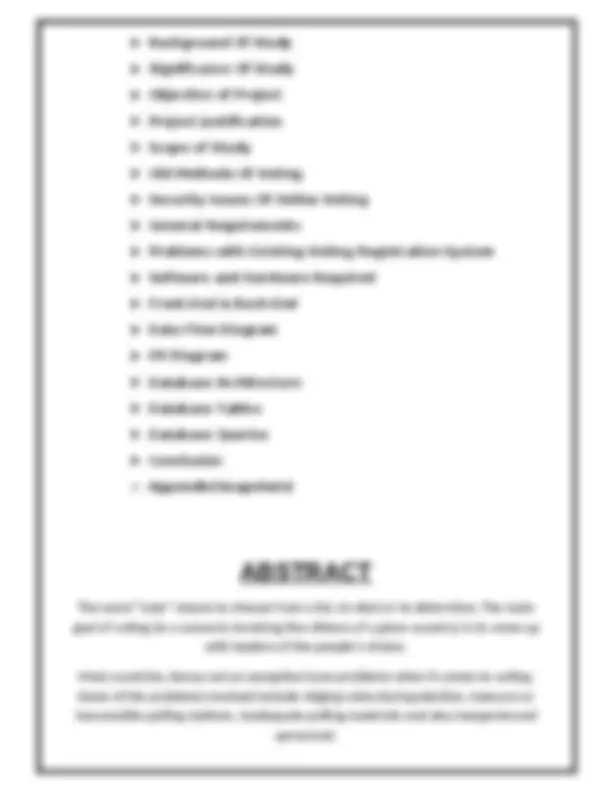
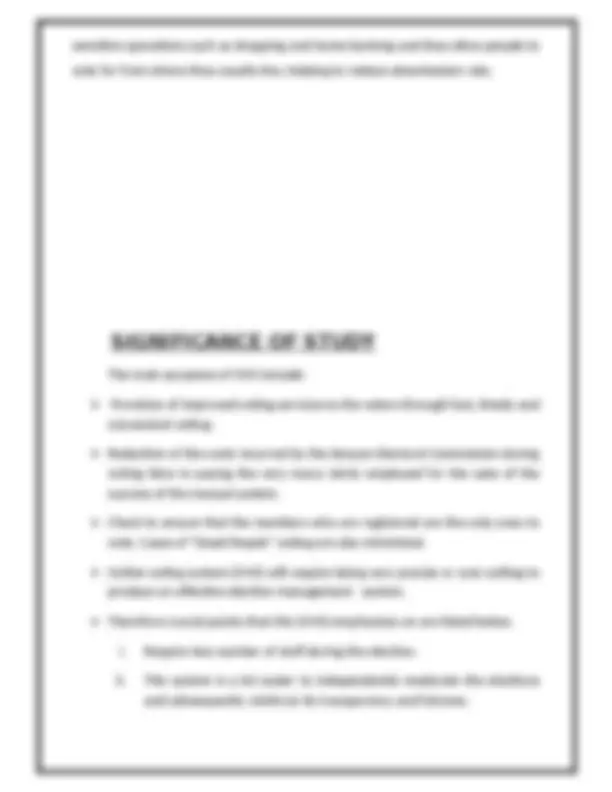
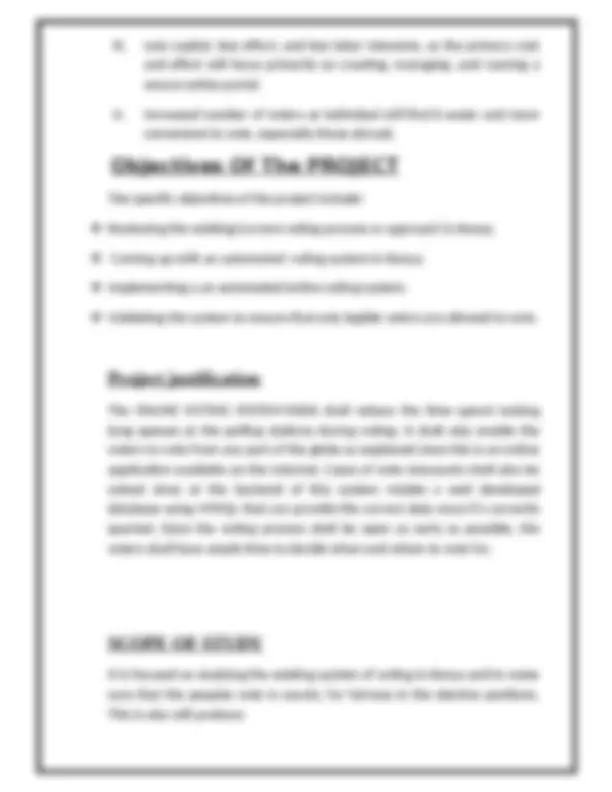
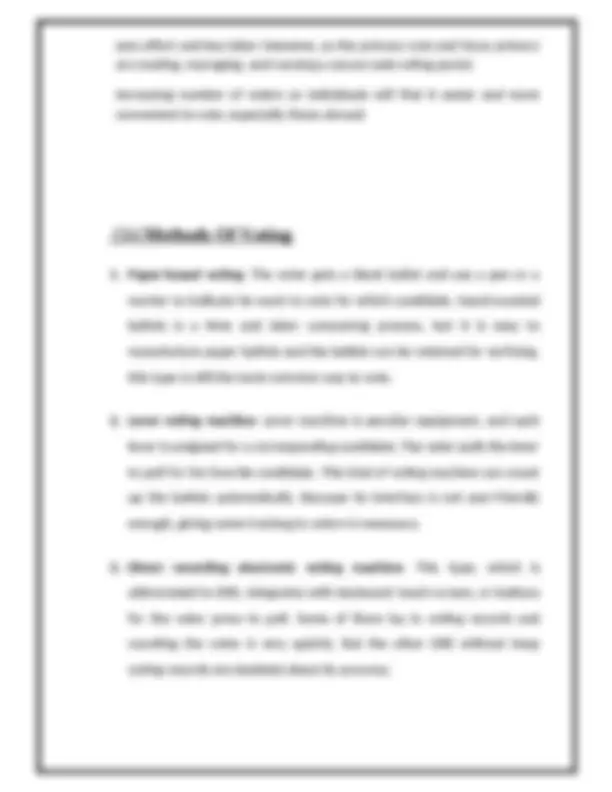
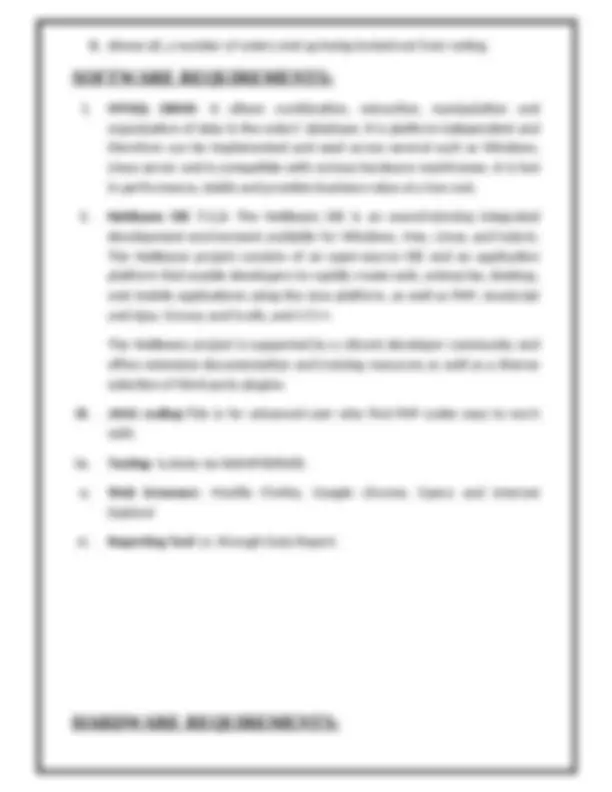
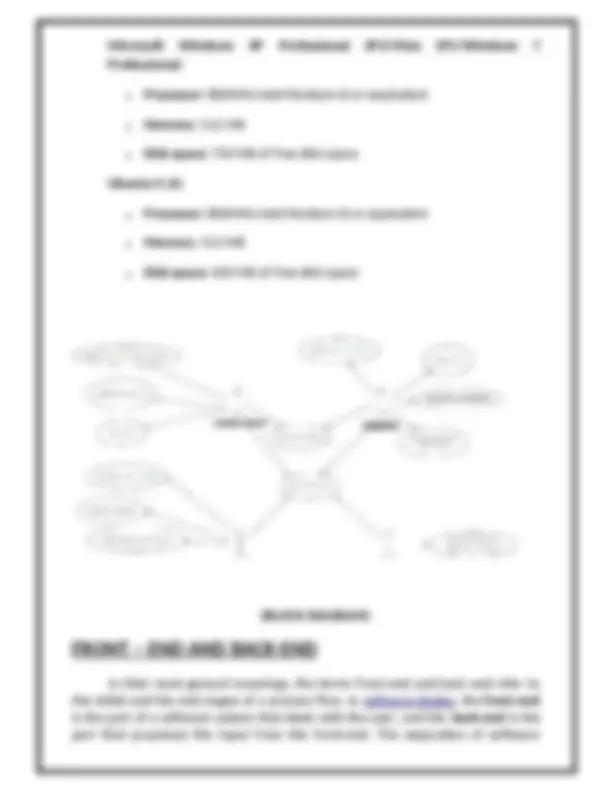
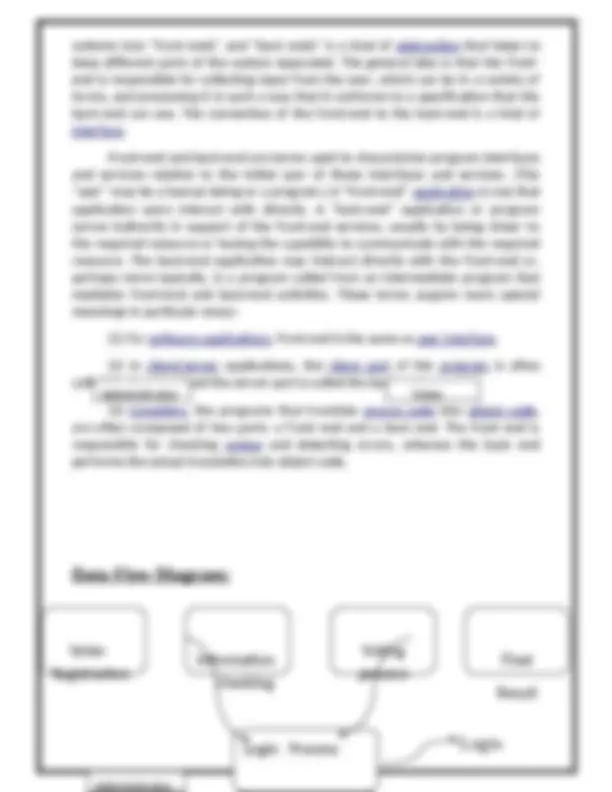
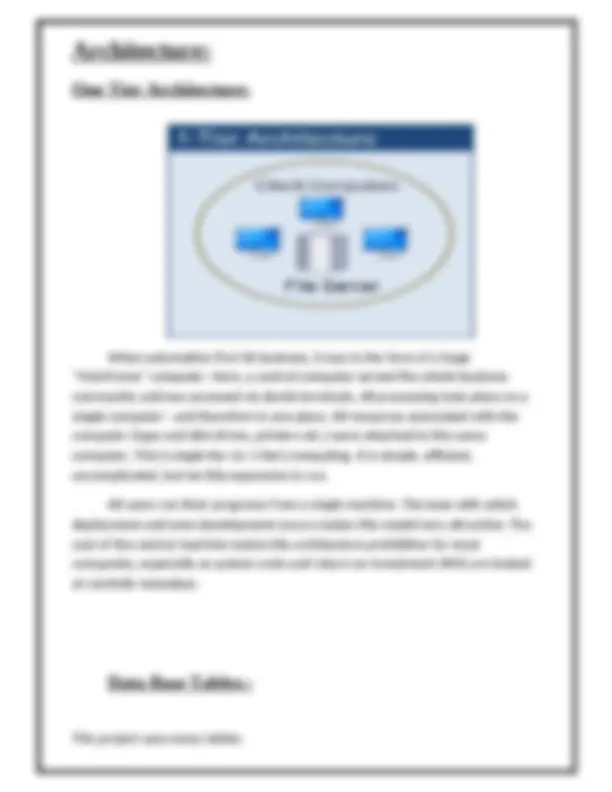
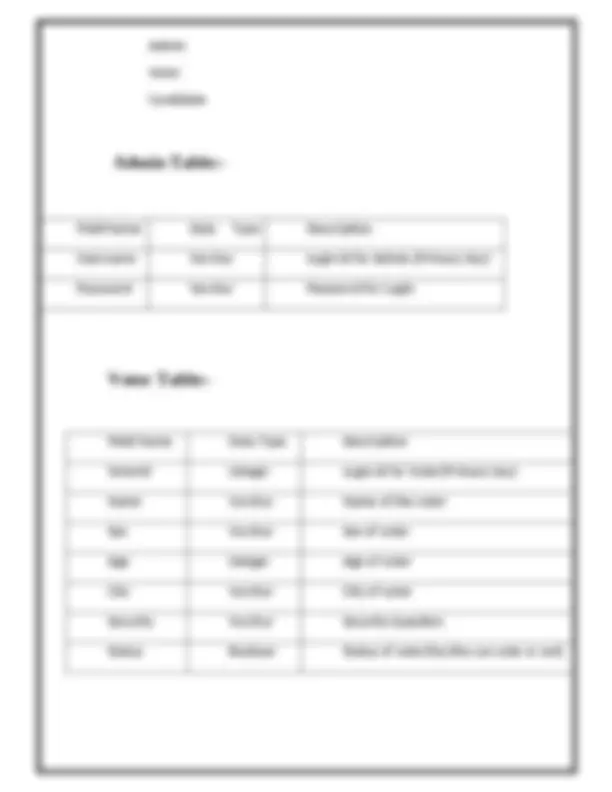
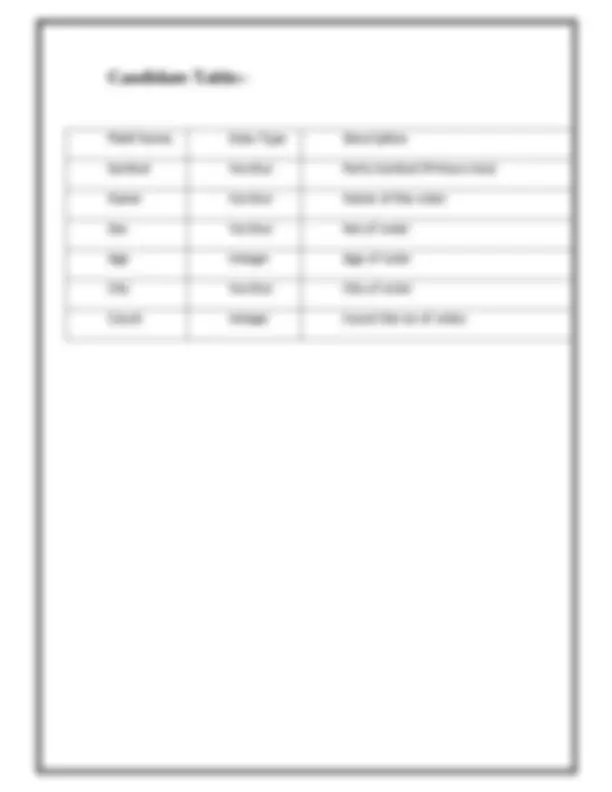
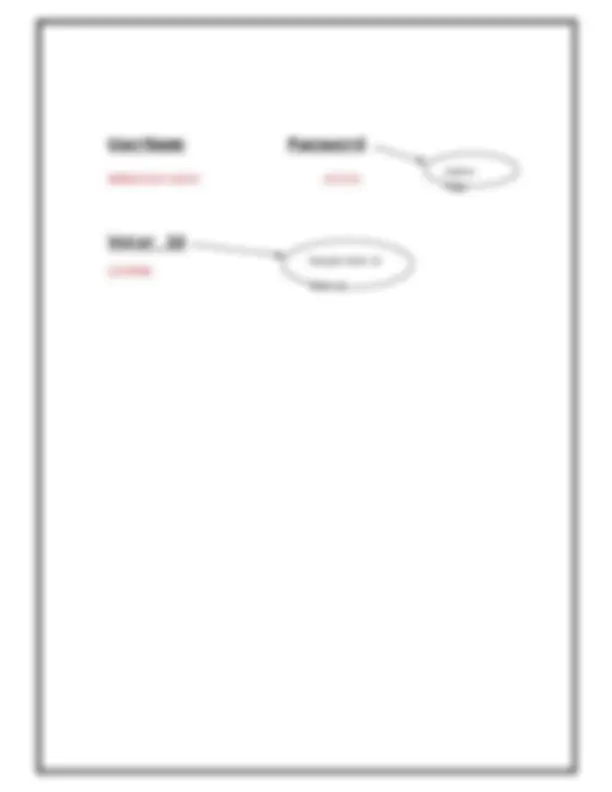
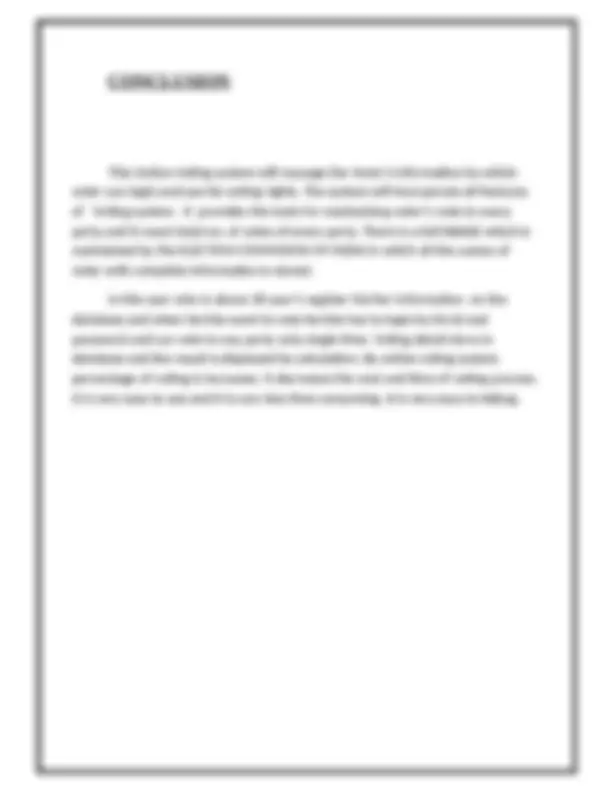


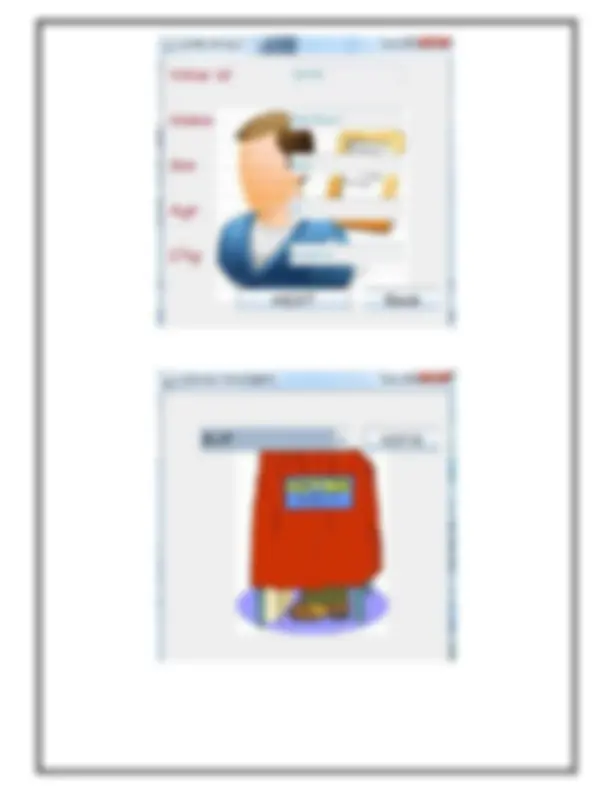






Study with the several resources on Docsity

Earn points by helping other students or get them with a premium plan


Prepare for your exams
Study with the several resources on Docsity

Earn points to download
Earn points by helping other students or get them with a premium plan
Community
Ask the community for help and clear up your study doubts
Discover the best universities in your country according to Docsity users
Free resources
Download our free guides on studying techniques, anxiety management strategies, and thesis advice from Docsity tutors
report The .NET Framework is a new computing platform that simplifies application development in the highly distributed environment of the Internet. The .NET Framework is designed to fulfill the following objectives:
Typology: Study Guides, Projects, Research
1 / 29

This page cannot be seen from the preview
Don't miss anything!






















PROJECT REPORT ON
OVS - Online Voting System
Abstract
Introduction To Online Voting System
Background Of Study
Significance Of Study
Objective of Project
Project Justification
Scope of Study
Old Methods Of Voting
Security Issues Of Online Voting
General Requirements
Problems with Existing Voting Registration System
Software and Hardware Required
Front-End & Back-End
Data Flow Diagram
ER Diagram
Database Architecture
Database Tables
Database Queries
Conclusion
Appendix(Snapshots)
ABSTRACT
The word “vote” means to choose from a list, to elect or to determine. The main
goal of voting (in a scenario involving the citizens of a given country) is to come up
with leaders of the people’s choice.
Most countries, Kenya not an exception have problems when it comes to voting.
Some of the problems involved include ridging votes during election, insecure or
inaccessible polling stations, inadequate polling materials and also inexperienced
personnel.
voting. If invalid/wrong details are submitted, then the citizen is not registered to
vote.
BACKGROUND OF STUDY
The Online voting system (OVS) also known as e-voting is a term encompassing
several different types of voting embracing both electronic means of counting
votes. Electronic voting technology can include punched cards, optical scan voting
systems and specialized voting kiosks (including self contained direct-recording
electronic voting systems or DRE). It can also involve transmission of ballots and
votes via telephones, private computer networks, or the internet.
Online voting is an electronic way of choosing leaders via a web driven
application. The advantage of online voting over the common “queue method” is
that the voters have the choice of voting at their own free time and there is
reduced congestion. It also minimizes on errors of vote counting. The individual
votes are submitted in a database which can be queried to find out who of the
aspirants for a given post has the highest number of votes.
This system is geared towards increasing the voting percentage in Kenya since it
has been noted that with the old voting method {the Queue System}, the voter
turnout has been a wanting case. With system in place also, if high security is
applied, cases of false votes shall be reduced.
With the “ONLINE VOTING SYSTEM”, a voter can use his\her voting right online
without any difficulty. He\She has to register as a voter first before being
authorized to vote. The registration should be done prior to the voting date to
enable data update in the database.
However, not just anybody can vote. For one to participate in the elections,
he/she must have the requirements. For instance, he/she must be a registered
citizen i.e. must be 18 and above years old. As already stated, the project ‘Online
Voting' provides means for fast and convenient voting and access to this system is
limited only to registered voters.
Internet voting systems are appealing for several reasons which include; People
are getting more used to work with computers to do all sorts of things, namely
sensitive operations such as shopping and home banking and they allow people to
vote far from where they usually live, helping to reduce absenteeism rate.
SIGNIFICANCE OF STUDY
The main purposes of OVS include:
Provision of improved voting services to the voters through fast, timely and
convenient voting.
Reduction of the costs incurred by the Kenyan Electoral Commission during
voting time in paying the very many clerks employed for the sake of the
success of the manual system.
Check to ensure that the members who are registered are the only ones to
vote. Cases of “Dead People” voting are also minimized.
Online voting system (OVS) will require being very precise or cost cutting to
produce an effective election management system.
Therefore crucial points that this (OVS) emphasizes on are listed below.
i. Require less number of staff during the election.
ii. This system is a lot easier to independently moderate the elections
and subsequently reinforce its transparency and fairness.
Less effort and less labor intensive, as the primary cost and focus primary
on creating, managing, and running a secure web voting portal.
Increasing number of voters as individuals will find it easier and more
convenient to vote, especially those abroad.
1. Paper-based voting : The voter gets a blank ballot and use a pen or a
marker to indicate he want to vote for which candidate. Hand-counted
ballots is a time and labor consuming process, but it is easy to
manufacture paper ballots and the ballots can be retained for verifying,
this type is still the most common way to vote.
2. Lever voting machine : Lever machine is peculiar equipment, and each
lever is assigned for a corresponding candidate. The voter pulls the lever
to poll for his favorite candidate. This kind of voting machine can count
up the ballots automatically. Because its interface is not user-friendly
enough, giving some training to voters is necessary.
3. Direct recording electronic voting machine : This type, which is
abbreviated to DRE, integrates with keyboard; touch screen, or buttons
for the voter press to poll. Some of them lay in voting records and
counting the votes is very quickly. But the other DRE without keep
voting records are doubted about its accuracy.
4. Punch card : The voter uses metallic hole-punch to punch a hole on the
blank ballot. It can count votes automatically, but if the voter’s
perforation is incomplete, the result is probably determined wrongfully.
their favorite candidate on the blank ballot, this machine selects the
darkest mark on each ballot for the vote then computes the total result.
This kind of machine counts up ballots rapidly. However, if the voter fills
over the circle, it will lead to the error result of optical-scan.
Recent years, a considerable number of countries has adopted E-voting for their
official elections. These countries include; America, Belgium, Japan and Brazil.
Foreign experience revealed that they are often confronted by security
issues while the online voting system is running. The origin of the security
issues was due to not only outsider (such as voters and attackers) but also
insider (such as system developers and administrators), even just because
the inheritance of some objects in the source code are unsuitable. These
errors caused the voting system to crash.
The proposed solutions were correspondingly outlined to hold back these
attacks. For example, to avoid hacker making incursion into the voting
system via network, we can design our system to transmit data without
network. Another example is to limit voter to input particular data, so that
we can prevent the command injection from running
6. Above all, a number of voters end up being locked out from voting.
i. MYSQL DBMS- It allows combination, extraction, manipulation and
organization of data in the voters’ database. It is platform independent and
therefore can be implemented and used across several such as Windows,
Linux server and is compatible with various hardware mainframes. It is fast
in performance, stable and provides business value at a low cost.
ii. NetBeans IDE 7.1.2- The NetBeans IDE is an award-winning integrated
development environment available for Windows, Mac, Linux, and Solaris.
The NetBeans project consists of an open-source IDE and an application
platform that enable developers to rapidly create web, enterprise, desktop,
and mobile applications using the Java platform, as well as PHP, JavaScript
and Ajax, Groovy and Grails, and C/C++.
The NetBeans project is supported by a vibrant developer community and
offers extensive documentation and training resources as well as a diverse
selection of third-party plugins.
iii. JAVA coding- This is for advanced user who find PHP codes easy to work
with.
iv. Testing- is done via WAMPSERVER.
v. Web browsers : Mozilla Firefox, Google chrome, Opera and Internet
Explorer
vi. Reporting Tool i.e. through Data Report.
Microsoft Windows XP Professional SP3/Vista SP1/Windows 7
Professional:
Processor: 800MHz Intel Pentium III or equivalent
Memory: 512 MB
Disk space: 750 MB of free disk space
Ubuntu 9.10:
Processor: 800MHz Intel Pentium III or equivalent
Memory: 512 MB
Disk space: 650 MB of free disk space
(BLOCK DIAGRAM)
In their most general meanings, the terms front end and back end refer to
the initial and the end stages of a process flow. In software design, the front-end
is the part of a software system that deals with the user, and the back-end is the
part that processes the input from the front-end. The separation of software
voter data stored data voting data final result
s
Election
Commissioner
Election
Commissioner
Voter Candidates Registration
Process
Registered Voter Database Registered Candidate
Voting
ADMIN
Add Candidates
Update Candidate
DetailsDelete Candidate
Add Voters
Update Voter
Details
Check Results
Admin
Voter
Candidate
Field Name Data Type Description
Username Varchar Login id for Admin.(Primary key)
Password Varchar Password for Login
Field Name Data Type Description
VoterId Integer Login id for Voter(Primary key)
Name Varchar Name of the voter
Sex Varchar Sex of voter
Age Integer Age of voter
City Varchar City of voter
Security Varchar Security Question
Status Boolean Status of voter(he/she can vote or not)
Field Name Data Type Description
Symbol Varchar Party Symbol (Primary key)
Name Varchar Name of the voter
Sex Varchar Sex of voter
Age Integer Age of voter
City Varchar City of voter
Count Integer Count the no of votes